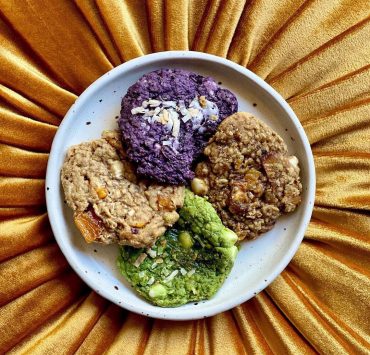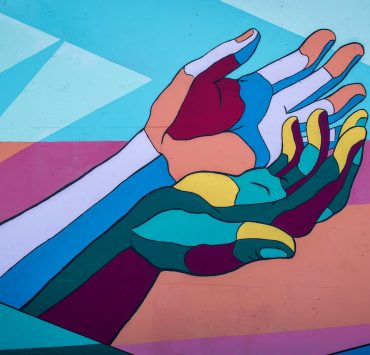On Oct. 1, 2020, Antique Representative Loren Legarda filed a bill in the Congress called “An Act Safeguarding the Traditional Property Rights of Indigenous Peoples.” The measure aims to supplement the existing Republic Act 9371 or the Indigenous Peoples’ Rights Act of 1997 by protecting their tangible or intangible traditional cultural heritage—their artistic expressions (writings, songs, performances, etc.), traditional arts and crafts through the conventional forms of intellectual property like copyright, royalty and ownership.
One of the crafts the bill sought to safeguard is traditional weaving. In a statement, Rep. Legarda cited the entry of machine-woven blankets and garments appropriating Cordillera weaves into the local market.
There are, of course, many people inhabiting the Cordillera Administrative Region’s provinces Abra, Apayao, Benguet, Kalinga, Ifugao and Mountain Province, who belong in different groups. Legarda was right though that such competition (among many other factors, internal and external) can handicap indigenous artisans and in the long run even erase the products of their heritage.
This is exactly what happened to a Banaue town over the course of years, as told from the perspective of an outsider.
“[As children,] we would spend summers, visiting different indigenous groups, and there was this one particular vacation that we spent in Banaue,” recalled Anya Lim, the co-founder and managing and creative director of Alternative Nest and Trading /Training Hub for Indigenous or Ingenious Little Livelihood seekers (ANTHILL) Fabric Gallery, a social and cultural enterprise space in Cebu that works to provide sustainable livelihood to Filipino weaving and craft artisans.
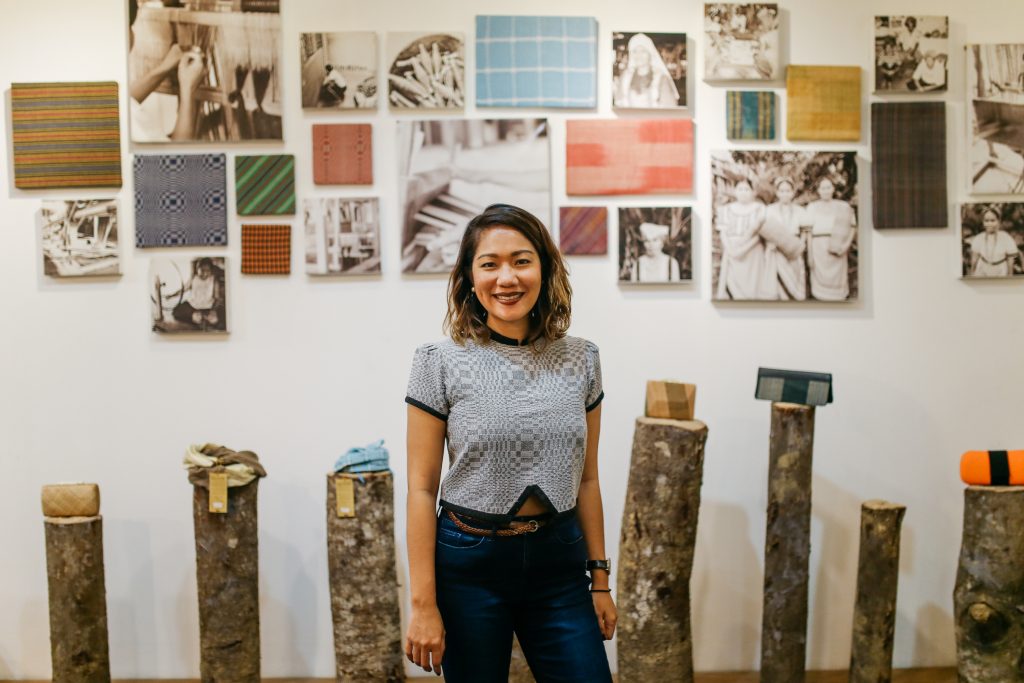
She was so fascinated by the weavers, woodcarvers and brass casters she saw in the village. This was one of the many trips they would take as a family raised by culturally and socially aware parents, the equivalent of a Disneyland trip to a kid her age then.
“A few years after, my brother and I went back and sadly it became a total ghost town. We’ve witnessed firsthand the death of a culture or a village and that really made me sad because it also felt like losing a part of my childhood.”
Lim was referring to the documented decline of traditional loom weaving in the north, where the master weavers are few and aging and due to economic challenges, the younger generation is pursuing work outside of their villages in hopes of getting higher pay.
Saving and sustaining weaving communities
One of Legarda’s recommendations in the bill is for the National Commission for Culture and the Arts to oversee the establishment of a comprehensive cultural archive of the cultural properties of all the ethnolinguistic groups in the country.
Lim’s work, meanwhile, is partly about making sure their communities are intact and sustainable in the first place so its assets can be preserved, passed on to the generation and even become profitable sources of livelihood for its residents in the present. It’s almost like the reverse of the bill’s approach, which on the surface is about making sure existing skills and output are protected without further examining what aspects from within their villages may be just as harmful appropriation and abuse from the outside.
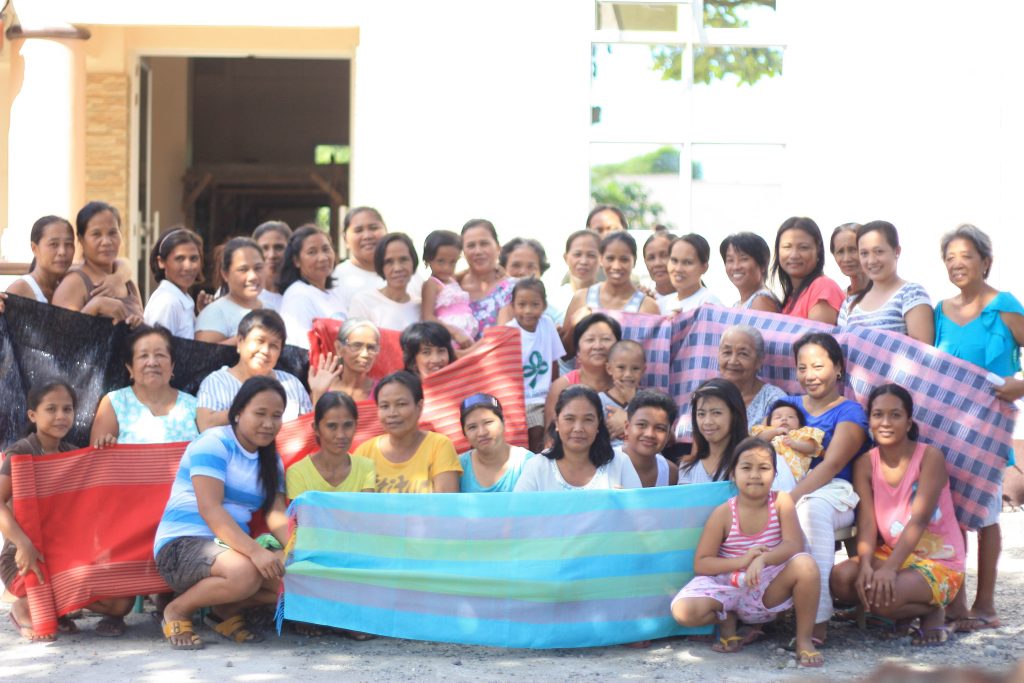
During a chat over Zoom one Tuesday afternoon (she in Cebu, I in Manila), Lim who likes to call herself the ant princess of ANTHILL (get it?), retraced the beginnings of the social enterprise in 2010. “Through my prior work with World Vision in the grassroots, I was able to connect to a lot of women and I realized that there was so much insecurity around them because they don’t have economic opportunities.
“Now there’s already that mindset among the younger generation of weavers that ‘I can call this a profession, and I’m going to be a proud weaver.’”
“A lot of them were very paralyzed, very timid, very shy, not able to really speak out, honor their voice. They are dependent on their partners and there’s also so much dissatisfaction because they don’t really know their potential.”
It got started with mang abel ti Abra or the weavers of Abra who make kantarines and binakol patterns. Soon, it expanded to a mission to be able to work with all the indigenous communities in the country.
In Bukidnon, an indigenous group called Daraguyan became their second partner community. However, much like Banaue weavers that fueled Lim’s work, its tradition of weaving is almost on its way out save for its last two masters.
“It took us about three years to be able to set up a weaving center for them and invest in skills training to get more women to learn to weave.”
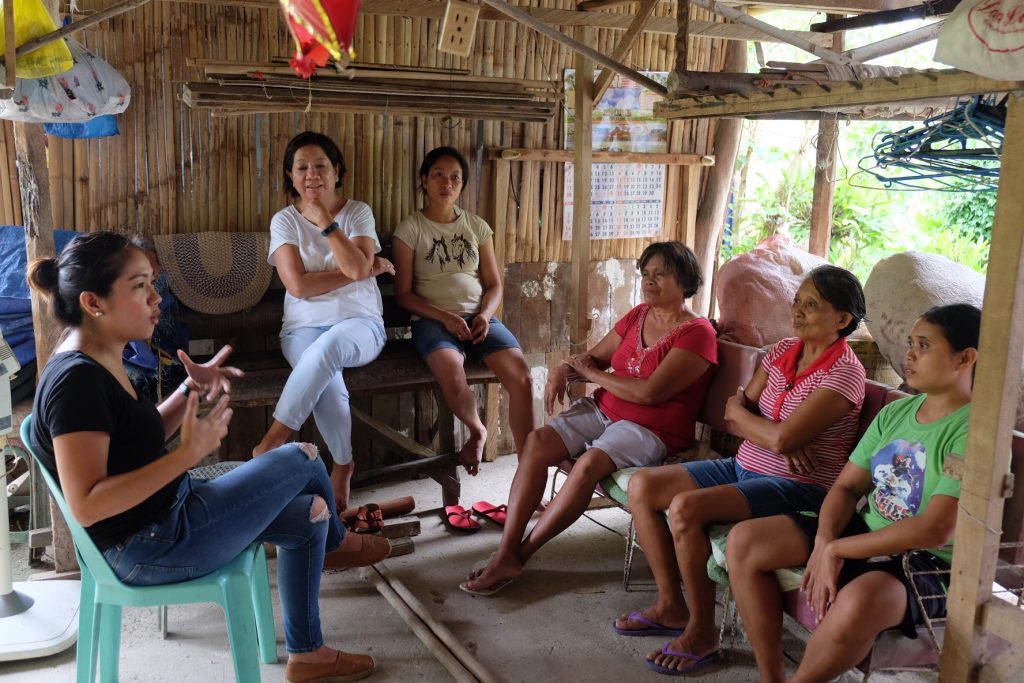
To date, ANTHILL works with almost 700 artisans all over the country under its cultural, economic and environmental programs geared towards production systems that are sustainable for the artisans themselves. A common disclaimer that Lim makes is that ANTHILL is actually a social and cultural enterprise. “We’re not naman shrewd businessmen. Being a social enterprise means that 80 percent of our profits are actually reinvested in these programs.” These include skills training for younger IPs and helping them unlearn their view of weaving as a women’s-only, low-profit and lowly profession. “50 percent of our weavers are aged 20 to 40 years old. Now there’s already that mindset among the younger generation of weavers that ‘I can call this a profession, and I’m going to be a proud weaver.’ A lot of those we interviewed said, ‘Bakit pa ako magiging saleslady or kahera sa grocery sa bayan kung pwede naman akong mag-weave sa community namin?’”
Mothers, on the other hand, are now choosing weaving over traditional domestic paid work or even being overseas Filipino workers. Lim said that in households, it is often in fact the husbands that encourage the wives to take up weaving because it brings in more money than other labor-intensive work.
“During the pandemic, I would say about 80 percent of our weavers automatically became breadwinners because their husbands’ jobs were all contractual: karpintero, pintor, driver. So sila ’yung mga jobs na naging at-risk, hindi essential. But the weaving continued on. I mean, of course, it was also still badly affected, but at least they have that, you know they have that which they can own forever. It’s their business.”
Putting local weaves on the map—literally
On the business side of things, Lim and her team still work to make ANTHILL profitable but also relevant and accessible to the market. A challenge in marketing clothes, accessories and lifestyle products made out of weaves is communicating its worth and social impact to consumers who are so used to dirt cheap pricing of mass-produced fast-fashion brands.
Manila has always been a central market for the brand. Lim attributes this to the knowledge and appreciation that people in the urban centers have of ethical buying, supporting local producers and the quality of traditional crafts. It also helped that by the time Lim entered the market, Manila-based designers were already using these woven fabrics in their repertoire albeit catered to high-society clients with spending power.
To entice prospective buyers, ANTHILL caps the prices of products at P8,000, which based on its market study is the maximum amount that customers would be willing to shell out for such products. Entry-level products like neckties and turbans are also developed and sold below P1,000. There are also non-wearables like a passport holder and matching luggage tags made with panels of weaves from Abra, Bukidnon and Argao, where their textile innovation and research center is located. Placemats, pillow covers and table runners are available too under their home decor section.
The newest addition to this line is a Philippine map constructed from over 30 different weaves that illustrates where in the country these unique patterns are from while also ensuring that scraps don’t end up in landfills.
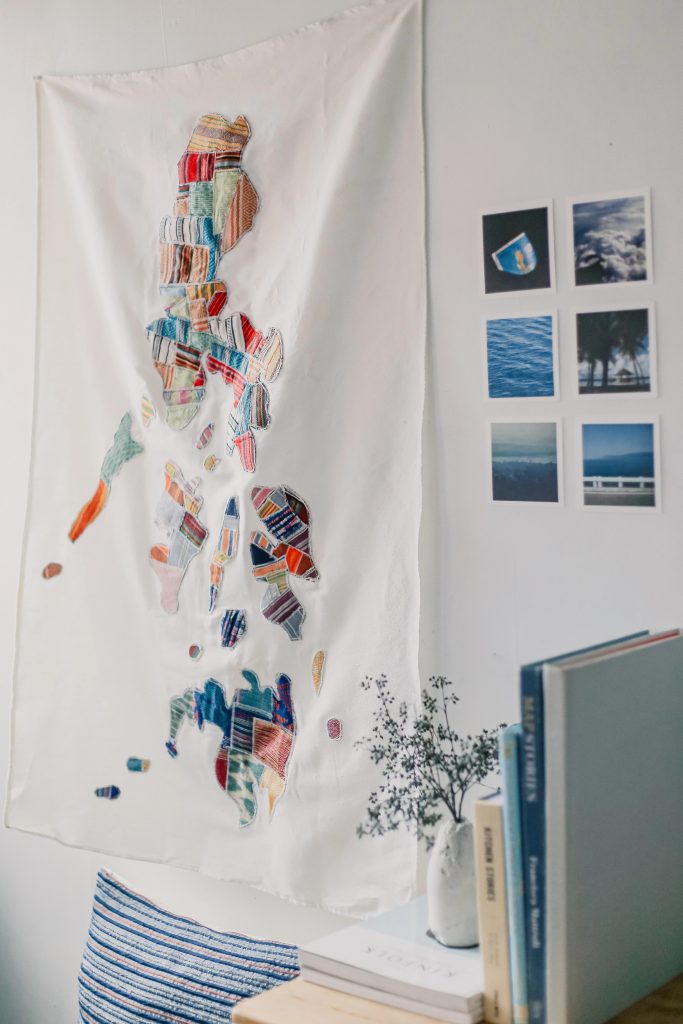
“We want this to be a representation of the creativity of the Filipino craftsmen and also something that we can surely be proud of as Filipinos.”
“The map was a huge experiment and it’s also the first zero-waste wall decor that we have,” said Lim. At 40×24.5 inches, the map laid in canvas is huge enough to cover a portion of a wall, the way ANTHILL’s non-apparel designer Kristina Dimaano intended it to be.
Its conceptualization goes back to a request made by the Philippine ambassador to Germany to the brand to come up with gifts for their diplomat friends. To answer this challenge, Dimaano had to think back to the current times and how many people are spending most of their time in quarantine—at least those who can safely retreat at home at no expense to their livelihood.
The prompt went something like “What’s a better way to kind of represent the country in your Zoom calls, if not for having something, a piece of home in your background? And what’s a creative way to do that?”
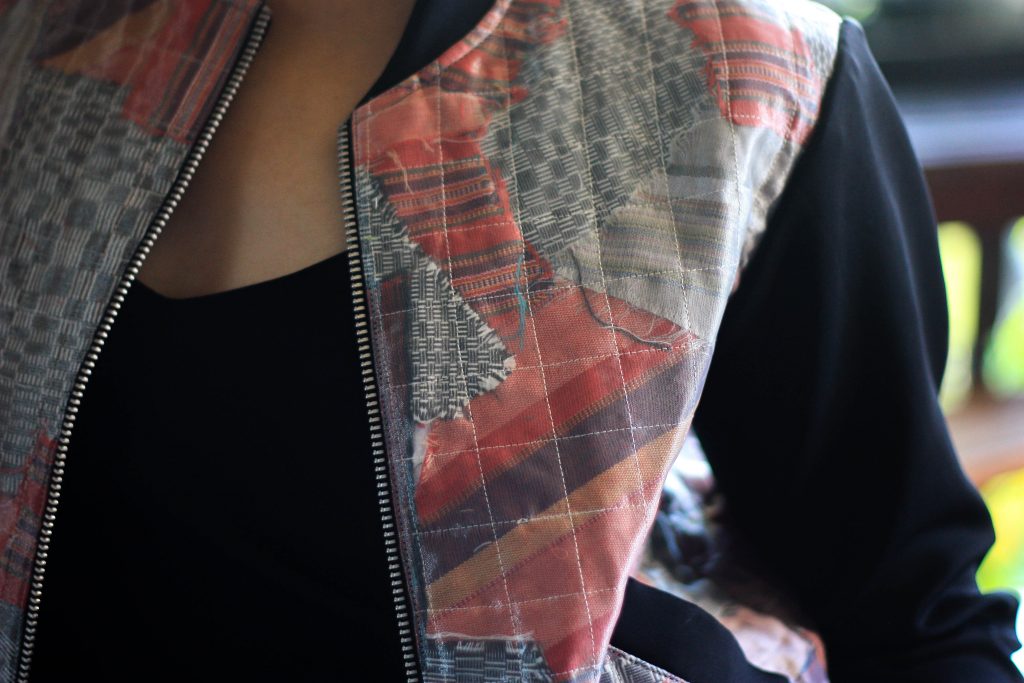
The idea also came naturally to the brand given their zero-waste approach to things. Over the years, ANTHILL has accumulated so much fabric scrap or retaso of different kinds of weaves that it has since been working to upcycle through its zero-waste line of apparel and product development. Through its circularity program, close to 6,000kg of scraps has been upcycled. One of the ways through which this is done is through a method where tiny strips of upcycled scrap are woven as isolated stripes into fabric that forms an althogether different design. These are later sold by the meter for P1,800 along with assorted swatches of scraps priced at P1,499 per kg.
This asset also became part of the challenge for Dimaano and her team: how they can incorporate the brand’s circular philosophy with a design that still retains a Filipino identity.
That’s just the beginning. To create one map it takes five to six artisans poring over scraps, sorting it, locating it on the map, sewing it together and making sure the final product is quality-controlled. One map uses roughly a kilogram of scraps depending on available patterns. That’s not factoring in the prior work it took to make those fabrics, which by Lim’s estimate involves 10 or so weavers working the loom in their respective communities. “The entire production time would last for about five days or more because sorting, tracing and then the patchwork on the canvas takes time before they do the final sewing or production. Sewing alone would take about six hours in a day, so that’s how long it takes,” Lim said.
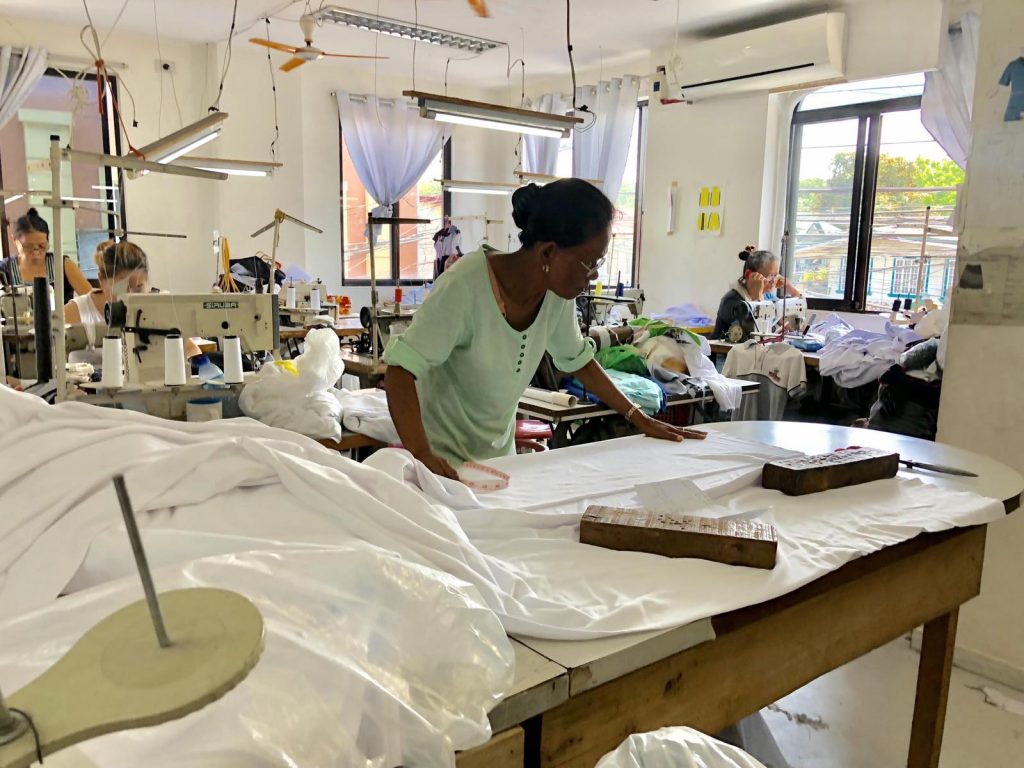
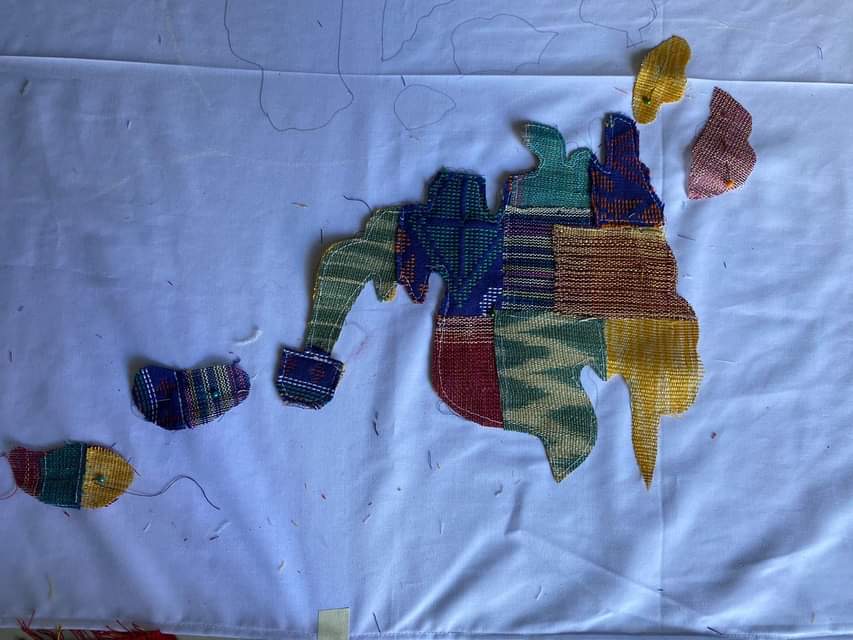
For the map tapestry, ANTHILL worked exclusively with Goldstitch, a production partner that they’ve collaborated with in the past six years for products like scarves, bags and pouches which usually end up being corporate gifts (that market also contributes to ANTHILL’s sales along with making staff and personnel uniforms for schools, hotels and restaurants). The team at Goldstich lays the scraps out on the canvas, traces them into the outline of the map, secures the frays so the weaves don’t unravel (a common tendency for woven materials) and does the final stitching.
“They are the ones who are very professional and also very patient in terms of product development so we gave them this challenge. We’ve also been able to create so much impact in their business in terms of growing the number of seamstresses and also growing their production space. They used to only work in a garage and now they have their own space in a building and they’ve also increased their number of seamstresses.”
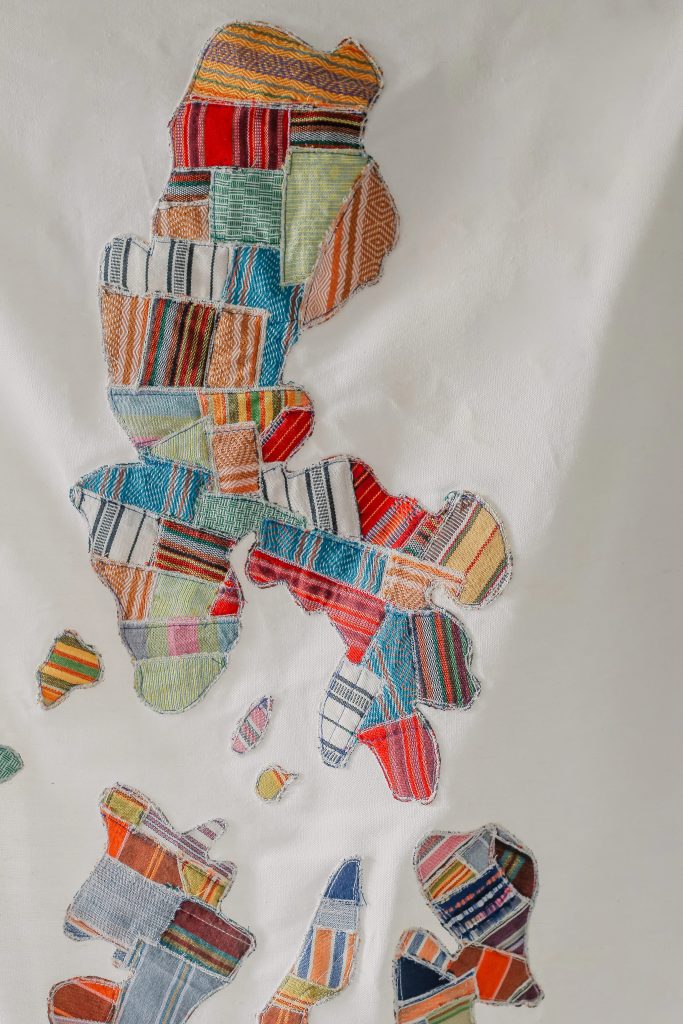
Priced at P5,999, the tapestry is currently available through ANTHILL’s website on a pre-order basis with a two to three week wait.
“We created this Philippine tapestry map because we wanted to be able to show a piece of art/wall art/fabric art that’s a representation of the diversity and beauty in our culture. We want it to be both a statement and a story piece that can be passed on from generation to generation. We want this to be a representation of the creativity of the Filipino craftsmen and also something that we can surely be proud of as Filipinos.”
WATCH: How ANTHILL’s Philippine Tapestry Map is Made
Video editor SAMANTHA ONG
Producer CHRISTIAN SAN JOSE
Special thanks to ANYA LIM of ANTHILL Fabric Gallery



